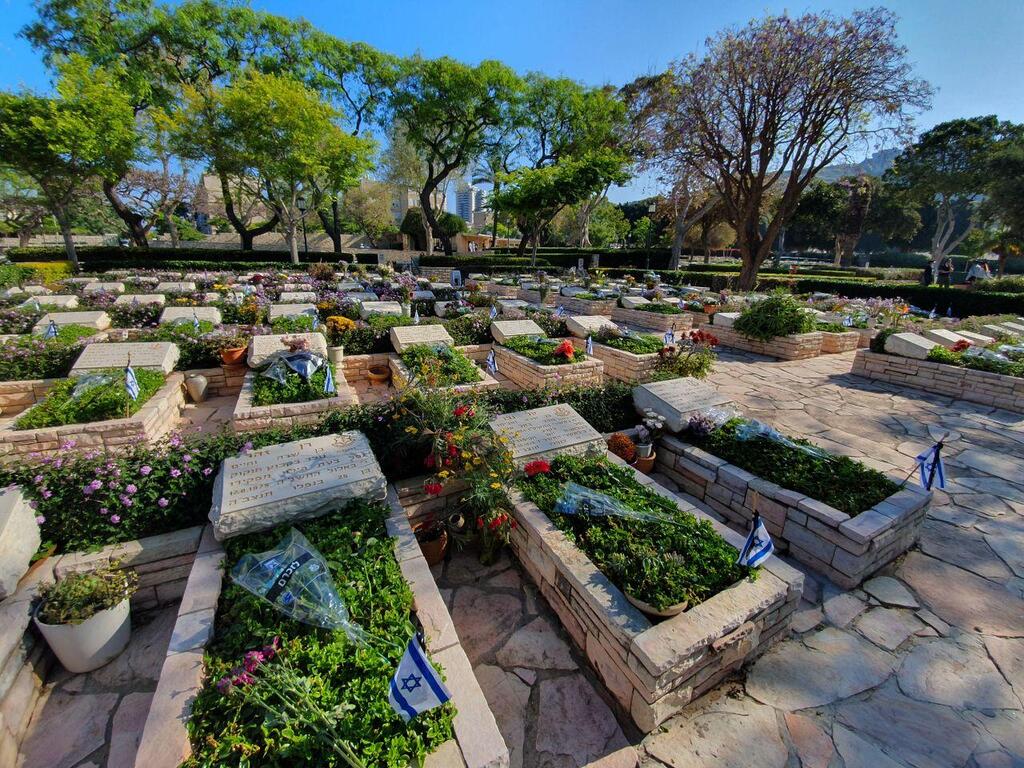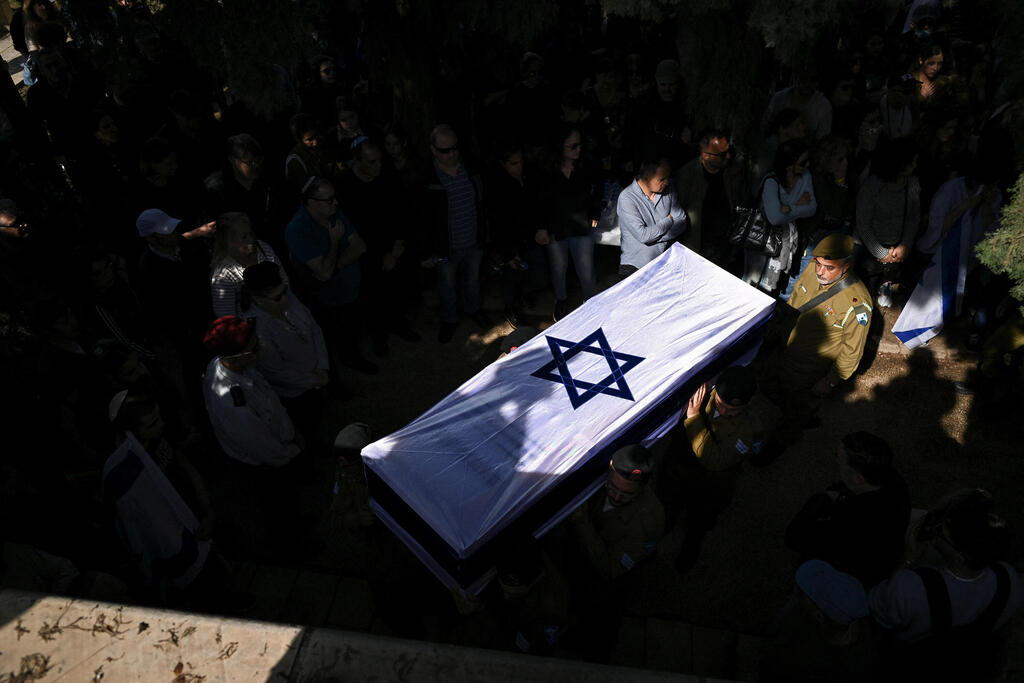Getting your Trinity Audio player ready...
Memorial services for IDF soldiers and victims of terror who were killed on October 7 began Sunday, marking 11 Hebrew months since Hamas' surprise attack on Gaza border towns.
As hundreds of IDF soldiers and Israeli civilians fell on that tragic Saturday—most before sunset on the 22nd of Tishrei—the first memorials are taking place on the 22nd of Av, from Sunday evening to Monday evening.
In past years, IDF representatives and unit members could stand alongside families on this difficult day. However, the raging war presents a unique challenge, with difficult choices facing soldiers from units that suffered heavy losses. Many could not attend the funerals due to ongoing combat, and those who can now participate in the memorials must decide which cemetery to visit and which comrade’s grave to honor.
This year, being a leap year in the Hebrew calendar, will see a surge in memorials over the coming weeks. Some families observe the 11-month anniversary, followed by memorials marking one year since death, and others adhere to the tradition of holding a memorial on the 13th month as well during a leap year. Some families choose to hold all three.
"We have a central command center within the IDF Casualty Department where casualty officers coordinate with families to set their preferred dates," explained Lt. Col. Meital Samet-Cohen, head of the IDF's Family Liaison Branch.
"The families communicate their wishes, and we coordinate with the Defense Ministry's Unit for Commemoration, covering everything from sound systems, canopies and transportation to arranging a military cantor for the ceremony." She added, "We work closely with families for every date they choose, including those who opt for multiple memorials."
Regarding the current situation, Lt. Col. Samet-Cohen noted, "Unit representatives will attend the memorials, likely from the home front, as we are still engaged in combat. Our guiding principle is to maintain the connection to the unit, marked by the beret color and insignia."
She also highlighted the logistical challenges, saying, "We receive requests from bereaved families asking for a nephew or uncle in combat to attend the memorial, and we liaise with commanders to stress the importance, as we do for fellow unit members. Despite the numerous memorials—due to both the heavy losses and the leap year—we maintain high standards and provide all necessary support, which presents significant logistical challenges."
One issue raised was the scheduling of multiple memorials at the same cemetery. "For instance, in the same section, there are fallen soldiers who died on the same day, and their families requested to hold memorials at the same time, which isn't ideal," Samet-Cohen explained.
"We ask families to adjust the timing slightly. On the day of the funerals, many were held under tight time constraints, especially in areas within rocket range. Today, during memorials, we focus on spacing out the times to give each family the time they need. It's a delicate and sensitive process. Our casualty officers work around the clock with immense sensitivity, which is greatly appreciated despite the challenges."




